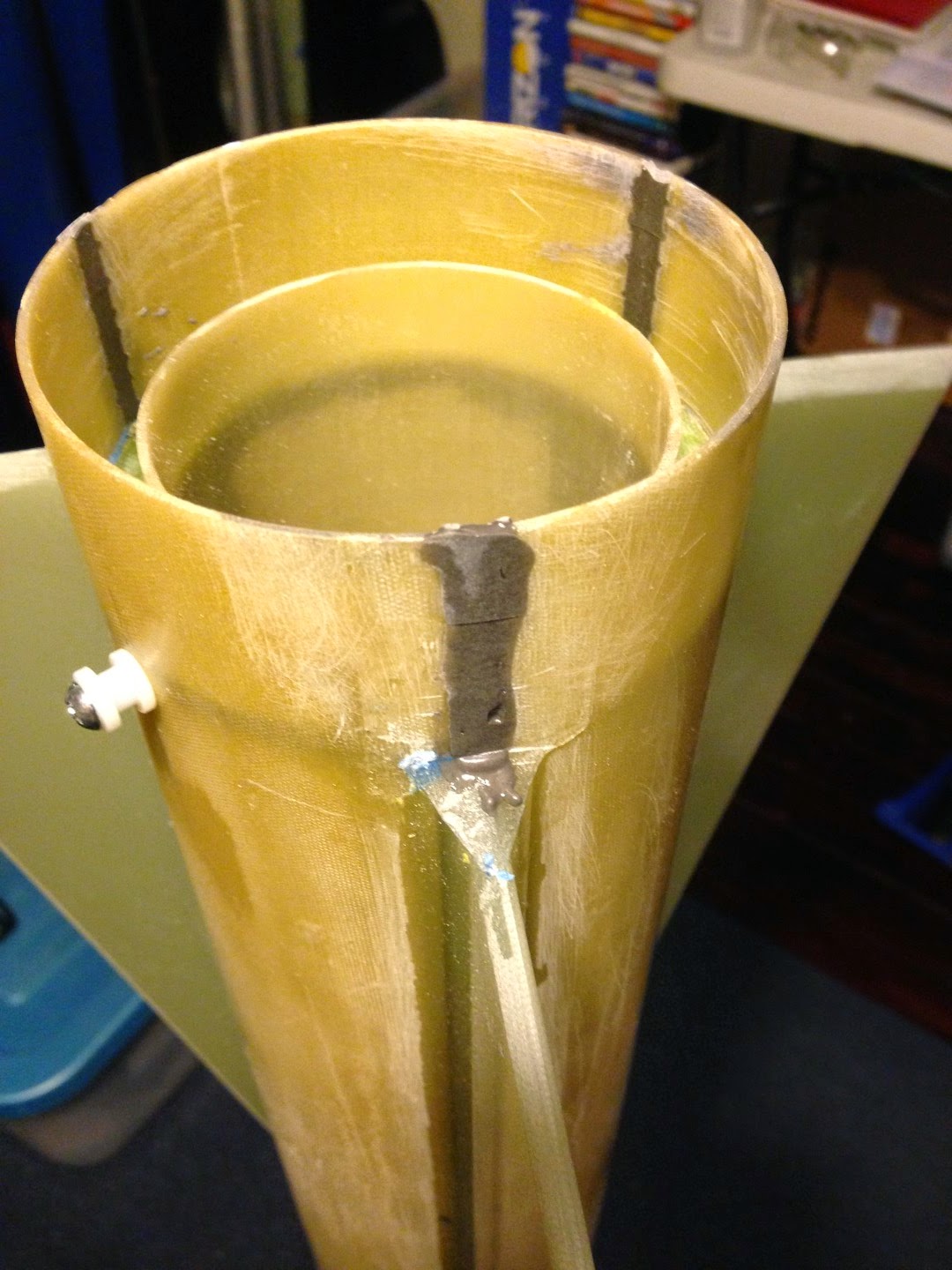GROUND VIDEO
ONBOARD VIDEO
Above is a screenshot of the data from SL100 Altimeter. It is interesting to note that the main fired at 700 feet like it was supposed to, and the rocket fell to about 400 feet before it slowed down to its descent rate of about 20 feet per second. It takes a fairly long time for the deployment bag setup to fully deploy. However, it was a perfectly smooth and gentle deployment, and unlike Positive Ascent, the nose cone and pilot chute got out of the way instantly, eliminating the possibility of a fly through of the main.
The weather was not very good. It was drizzling most of the day, including at the time of launch. Fortunately the rocket stayed in sight and didn't get very wet (except for the parachute...more on that later).
I started by packing the drogue and main recovery systems for a ground ejection test to verify adequate black powder quantities. It turned out that 2 grams of powder for the drogue and 3 grams for the main (with two 4-40 shear pins in the nose) was about perfect, and that's what I flew with. The drogue charge ended up seeming slightly too powerful in the air as the forward section pulled the shock cord tight fairly violently. However, the thanks to the shear pins the nose cone (and main parachute) stayed in place.
I had a small electrical issue with the backup electronics. I couldn't get the altimeter to turn on once we were at the pad ready for flight. I took the rocket down and took it apart to inspect. Using a volt meter, I was able to determine that the battery was plenty good and providing the correct voltage. I also verified that the switch was creating continuity properly. By removing the wires that run from the battery holder to the altimeter power port, I was able to find that the voltage was near zero at the ends of the wires. However, each wire individually had proper (near zero) resistance when measured. This led me to assume there was an intermittent connection in one of the two wires that I still have not been able to reproduce.
To temporarily fix the issue so I could still fly with backup electronics, I zip tied a separate 9 volt battery to one of the threaded rods, and crudely twisted and taped wires together to attach to the power port of the altimeter. The worst case scenario is that a wire could have come loose and the SL100 altimeter should still do its job just fine.
When we got to the pad the second time, I was sure everything would be fine now, but it wasn't. Unbelievably, the same exact issue - the HA45k altimeter would not turn on. I very nearly decided to just fly without backup electronics, but Jim Livingston (thanks Jim) told me it's not worth the risk. So again, we took the rocket down (to the dismay of a dozen or more spectators who had been waiting to see a "big" rocket fly), took the electronics bay apart, and tested and inspected. This time, I realized pretty quickly that I made a serious and seriously simple mistake. I had forgotten to check polarity of the battery that I just rigged into the rocket. Sure enough it was backwards, and the altimeter is smart enough to protect itself from reversed polarity. After swapping the polarity, we were off to the pad for the third time. This time everything turned on as expected and we were finally able to walk back to the flight line.
Following are pictures from the launch. Many thanks to Sab Okazaki for troubleshooting help, and for many of the great action shots, and thanks to Jim Livingston and Ben Rothstein for assistance during the launch.
One of the two trips back from the pad to investigate electronics issues.
An interesting shot just after burnout. It is unusual to see a rocket this close in a photo with no smoke or flame visible. Since the Vmax motor was so fast, burnout occurred at about 100 feet. The rocket is still moving at over 300 mph in this shot which is why the tracking smoke is not visible.
Descending with the new 24" X-form drogue parachute from Top Flight Recovery.
Successful main deployment. Both the main rocket (under main parachute) and the nose cone and deployment bag (descending under the 24" pilot chute) are visible.
The main parachute landed in the irrigation ditch. It took a good amount of force to lift it out of the water as it had scooped up a bunch of water. I'm lucky it wasn't much closer or the electronics bay would have landed in the water.
Carrying the rocket and wet parachute back.

.JPG)
.JPG)
.JPG)
.JPG)




.JPG)

.JPG)

.JPG)
.JPG)
.JPG)
.JPG)
.JPG)


.JPG)
.JPG)
.JPG)
.JPG)
.JPG)
.JPG)
.JPG)
.JPG)
+(Large).JPG)
.JPG)
.JPG)
.JPG)
.JPG)
.JPG)
.JPG)
.JPG)
.JPG)
.JPG)
.JPG)
.JPG)
.JPG)
.JPG)
.JPG)
.JPG)
.JPG)
.JPG)
.JPG)



.JPG)